|
Hommage: Linduarte Noronha
Introduction
Interview
Movies
Cinema
"My approach to cinema is very remote, really remote. I could
tell you its origin is nearly childlike. It all started with the well-known
film matinées, around 7 or 8 years old, around that age, with the
famous series and the special magnetism that one movie theater
had over my whole generation, the prestigious São Pedro theater."
|
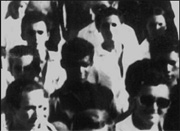
|
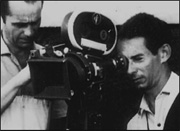
|

|
Aruanda
"Aruanda was born from an newspaper article. Because I
knew that, a long time before, and that was in 1958, I had to make
an article on the Rosário festival, in Santa Luzia do Sabugi (…) I
went with a good friend of mine, already deceased, Dulcídio
Moreira, who, at that time was a correspondent of O Estadão. (…)
It was a true adventure. Because you couldn’t get to the
mountains in a car, so we had to go on horseback, and the horse
fell down during the trip, and with a guide, we took a guide. Well,
once there, we did the photographic survey, both of us. I did it for
A União and he did for O Estado de São Paulo. He sent his article
for O Estado and I published mine in A União under the title ‘The
Potters of Serra do Talhado Spring’."
|

|
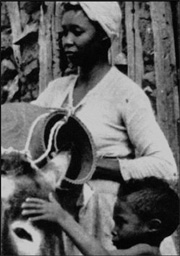
|
Against Jeca-Tatu
"Because I always said to the guys that used to live around film
clubs, who liked films from that time, that there was a long period of
film clubbing here too and, around critics, we sounded like the famous
character created by Monteiro Lobato, the intellectual Jeca-Tatu, we
spoke too much and did nothing. And there was always this talk, it was
kind of a disgust against conformism, I mean, I was disgusted when I
started reading, when I knew the English group of documentary
makers of Grierson, of Cavalcanti, the National Film Board, etc, the
great pioneer works of cinema and we asked: ‘Why don’t we do that as
well?’ We started out of nothing, without equipment, we started even
‘without inventiveness’, incipient in an origin equipment, names like
Murnay, like Flaherty. They had absolutely nothing. I was impressed by
Flaherty, how he was assigned to make a research on mineralogy and
ended up making a documentary, he made Nanook. Then our talks
were about that. ‘No, but those guys had money, they could move
around and stuff’, the folks said, and out talks were always about that.
And one fine day, I remember perfectly, we were sitting in front of A
União, at João Pessoa square, and I said: ‘Look, I have finished a script
about the group from the Serra do Talhado black group, and I will get
an equipment one way or another’. So, our biggest concern was
getting equipment and blank film."
|
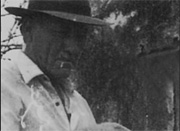
|
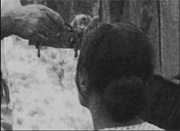
|
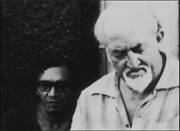
|
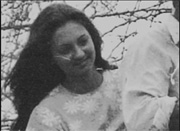
|

|
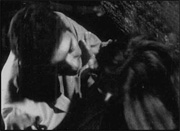
|
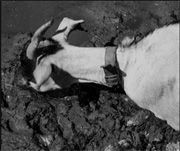
|
Flaherty
"Before, no. I saw ‘Nanook’ in 60, 61. A documentary that I had brought here
to João Pessoa, but after Aruanda, was ‘The Man from Aran’. The basic classic
documentaries, the acclaimed films, I would watch afterwards, at the National
Institute of Educational Film. Cavalcanti’s documentary, for instance, ‘Coal Face’, I
saw it there. (…) And I also saw a lot of things at the São Paulo Cinematheque.
Maybe what most struck me about Flaherty was the way he worked through
interviews. Something that impressed me deeply was an old interview I saw with
the old men, when he was about to make ‘Louisiana Story’. He got there and had
no idea how to start because everything was still, and film was movement. I was
eighteen when I read that interview with Flaherty in the Cena Muda Magazine. He
spent a month sitting under those Florida trees, looking for something that would
motivate a script. Then one day he sees a board with an oil tower cross from one
side to the other and the tower was swaying. He jumped. An oil tower swaying? It
was his film inspiration, of movement, in ‘Louisiana Story’. Then the spark, his
eureka was exactly that, the problem of how the movement comes, which up to
that moment he had not found the motivation for the film. I mean, you know how
these things stick with you, they grow in you, the experience of previous
generations. And that stuck with me, I was fifteen, sixteen, seventeen years old.
And then my concern when I did Aruanda was exactly the problem of movement,
because I already knew what the old masters would say: ‘Be careful with the static,
careful with the dead element, careful with things that have no life’."
|
Northeastern Cashew Tree
"I didn’t do ‘The Cashew Tree’ in 61 because I missed the cashew
cycle. Lots of things to do and when I realized, the cycle had gone by
and I had to wait another year. An artificial documentary is no good,
there’s no way I would make a cashew out of wax, I dread that."
|
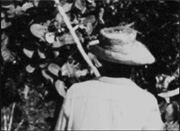
|
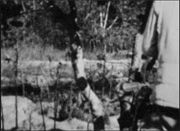
|
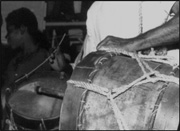
|
The Script for Documentary
"We worked strictly by the script, I mean, with some changes. I
wrote a strict script because there was too much theory in my mind,
the theoreticians of that time. Bela Balázs, The “Filmmaking Treaty”,
Eisenstein, and others. I had been reading those people since I was
fourteen, fifteen. For us, the script was a basis, it was the foundation
of film. Old Cavalcanti said in his book Film and Reality: “Once you
have finished your script, you have finished your film”. We had those
things in our mind, then we thought that there was no way we could
make a film without a script. It was taboo."
|
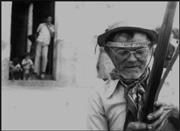
|
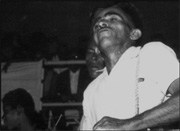
|
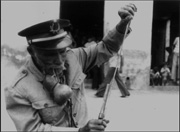
|
BIBLIOGRAPHY
MARINHO, JOSÉ. DOS HOMENS E DAS PEDRAS: O CICLO DO CINEMA DOCUMENTÁRIO PARAIBANO (1959-1979). NITERÓI, EDUFF, 1998.
SHOWCASE ACCOMPLISHED THANKS TO: CINEMATECA BRASILEIRA, CTAV, SECRETARIA DE CULTURA DA PARAÍBA AND CANAL BRASIL
|
 |


